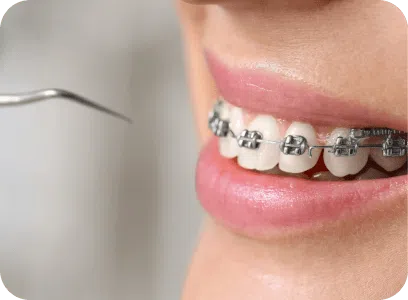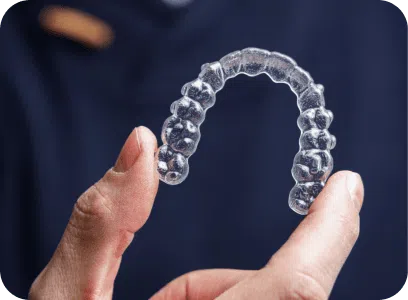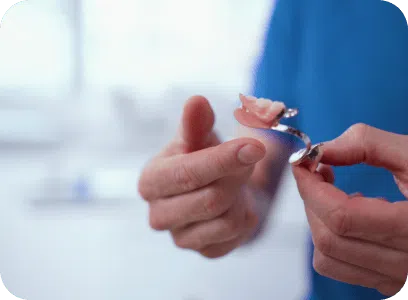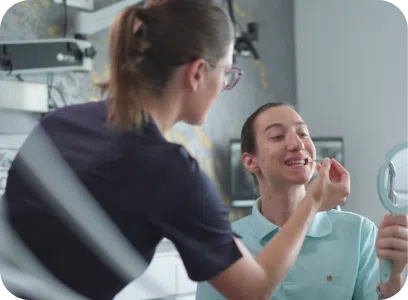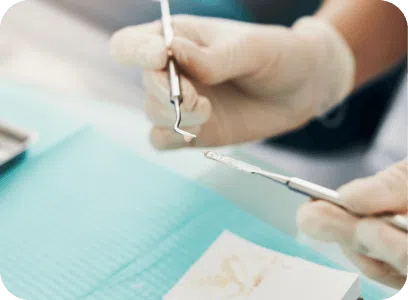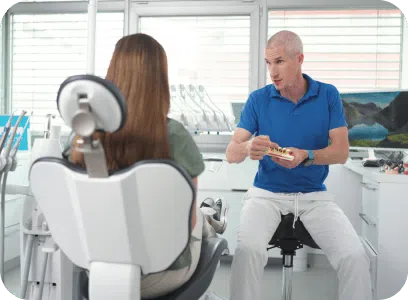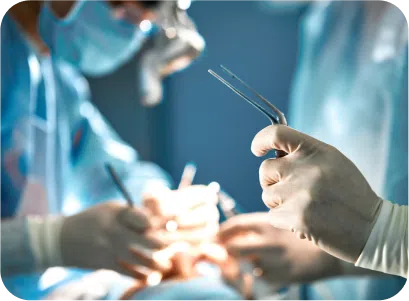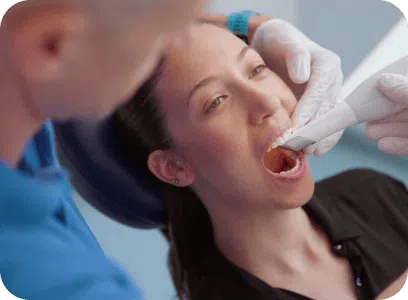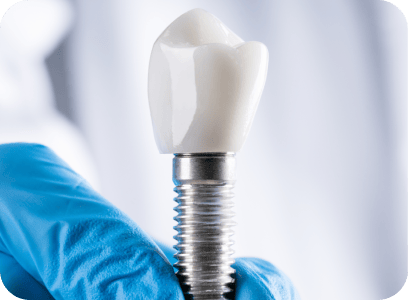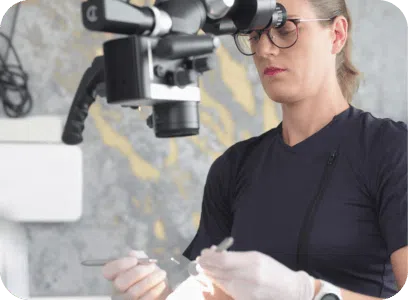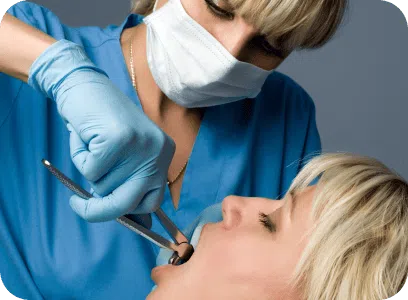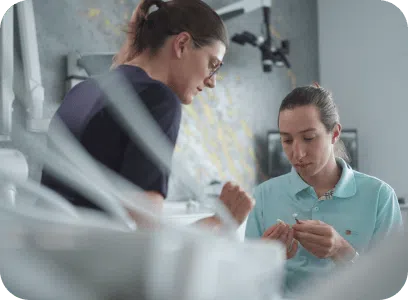Indirect ceramic fillings
Indirect ceramic fillings are custom-made in the dental laboratory. The indirect ceramic filling made in this way is later cemented into your tooth by the dentist at the Blue Tooth. Indirect ceramic fillings are used to repair teeth that have existing large fillings or have been extensively damaged by caries or trauma. These restorations are more conservative than full crowns because they require the removal of less tooth structure during the preparation process.
Aesthetic perfection
Porcelain indirect dental fillings are custom-made to fit your teeth perfectly, providing an aesthetically pleasing and natural appearance. The glossy texture of porcelain blends seamlessly with your teeth, creating a beautiful, cohesive smile.
Durability and resilience
Porcelain is an exceptionally durable material that can last a long time. Compared to traditional fillings, porcelain inlays are more resistant to wear, ensuring long-term functionality and protection for your teeth.
Minimal invasiveness
Creating porcelain ondirect dental fillings requires minimal removal of tooth enamel, preserving most of your healthy tooth tissue. This means the procedure is less invasive and helps maintain more of your natural tooth structure.
Advantages
The advantage of porcelain/composite indirect dental fillings lies in their durability, which is significantly better than composite fillings. Additionally, iIndirect dental fillings strengthen teeth, unlike amalgam fillings.
When to choose an indirect dental filling?
You may opt for an indirect dental filling when dealing with extensive decay, a cracked filling, a large filling, or for aesthetic reasons.
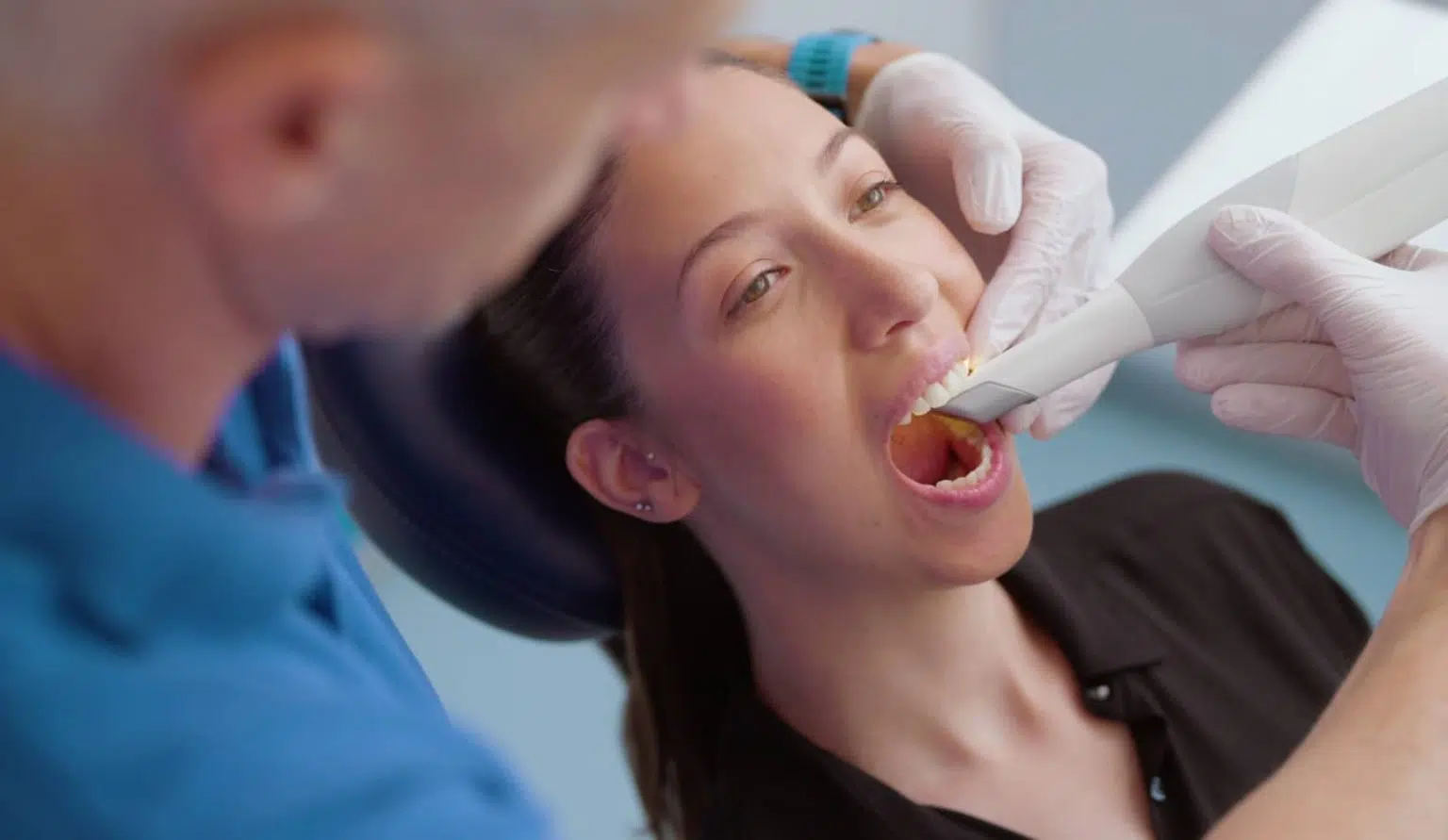
How is the indirect dental filling fitted?
Diagnosis and planning
The process begins with a precise diagnosis and planning. Our experienced dentists will carefully examine your teeth, assess the extent of damage or decay, and determine the suitability for porcelain fillings. Based on the diagnosis, the porcelain inlay will be designed to match the shape and color of your natural teeth.
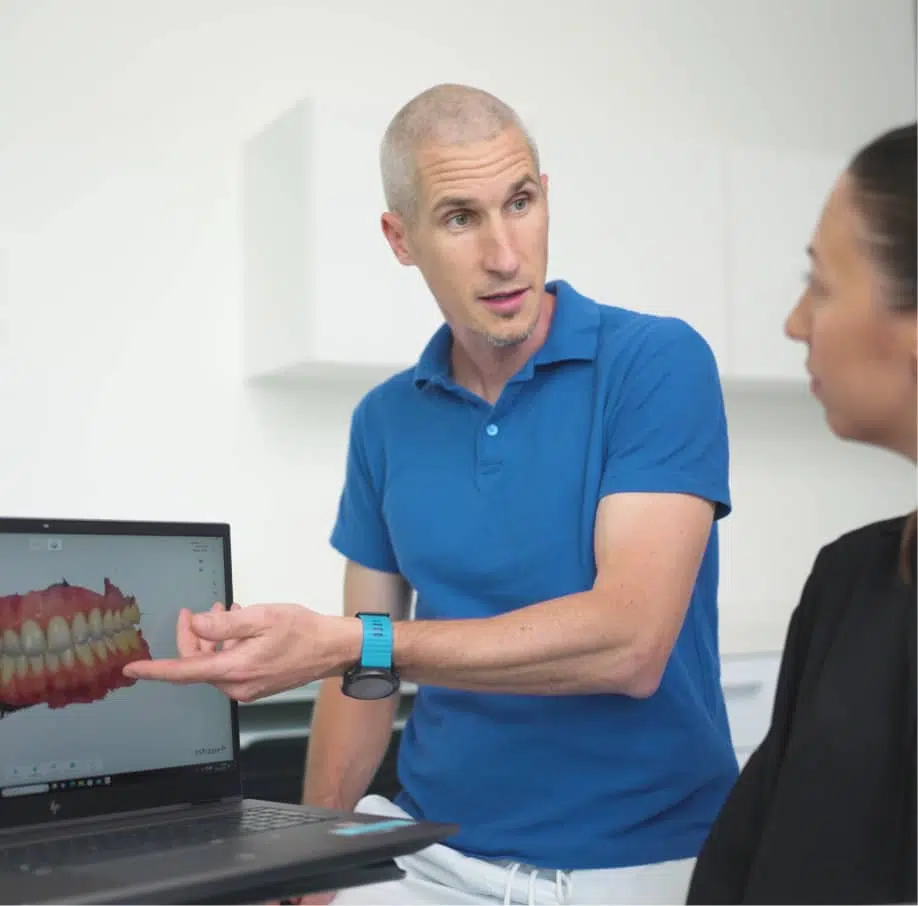
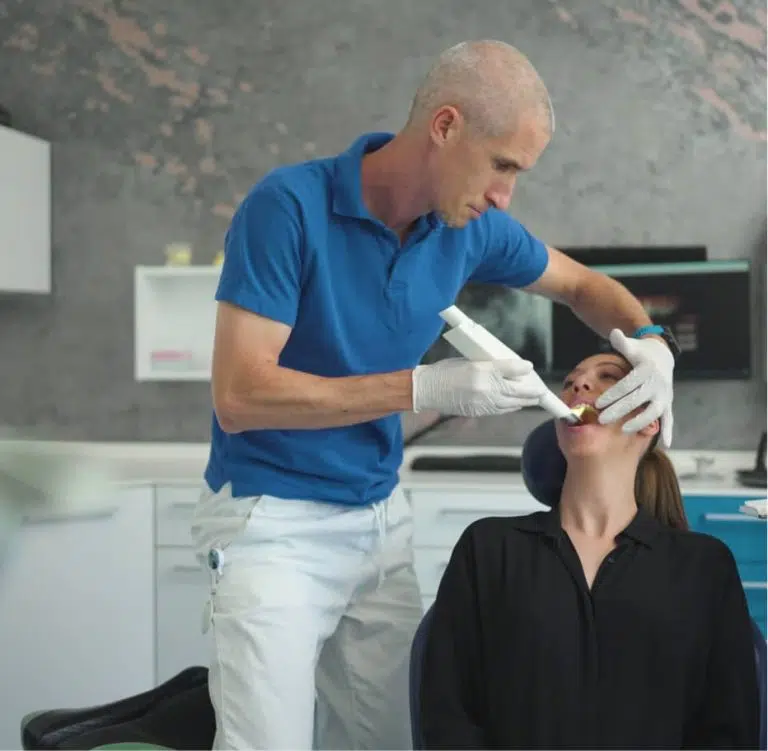
Tooth preparation and impression
In the next step, the dentist will remove the damaged or decayed part of the tooth, prepare the enamel, and shape the space for the porcelain indirect dental fillings. An accurate impression of your prepared teeth will then be taken and used to create a custom porcelain indirect dental filling in the dental laboratory.
Fitting the porcelain indirect dental filling
Once the porcelain indirect dental filling is made, the dentist will check its fit in terms of shape, color, and alignment with your tooth. After confirming its suitability, the porcelain indirect dental filling will be bonded to your tooth with a special adhesive. This results in a permanent, aesthetically pleasing tooth restoration that looks natural and provides a long-lasting and reliable solution for your smile.
Experienced team of experts
Our team of experienced dentists brings a wealth of experience and knowledge, ensuring safe, effective, and individually tailored dental care.
Quality materials
We use the highest quality materials, providing durability, stain resistance, and a natural appearance for dental inlays and onlays.
Minimally invasive procedure
The procedure for fitting a porcelain indirect filling requires minimal enamel removal, preserving as much healthy tooth tissue as possible.
Long-lasting solution
Porcelain indirect filling are durable and resistant to everyday wear, ensuring long-term functionality and protection for your teeth.
Patients love us
... and their new smiles! 🙂

Modri zob Nova Gorica

Modri zob Kranj

Modri zob Kranj

Modri zob Kranj

Modri zob Nova Gorica

Modri zob Nova Gorica
Answers to frequently asked questions
What types of fillings are there?
We differentiate between direct and indirect dental fillings. Direct dental fillings are created by the dentist in a single visit to the dental office (amalgam fillings, composite fillings, and glass ionomer cement fillings). Indirect dental fillings involve removing decay, taking an impression, and having a technician create the filling, which is cemented in place during a subsequent visit (inlays, onlays).
What are inleys, onleys and overleys?
Inlays and onlays are types of ceramic or composite indirect filling used when tooth decay or damage is too extensive to be repaired with a filling. The dentist removes the decay and takes an impression during the first visit. The technician then creates a ceramic or composite restoration, which is cemented in place during the next visit. The primary difference between an inlay and an onlay is their size. An onlay is larger and used when the tooth’s cusp needs to be replaced.
Are porcelain indirect dental fillings suitable for me?
Indirect ceramic fillings are suitable for people who have minor damage or decay on their teeth. Your dentist will assess the condition of your teeth and determine whether you are a suitable candidate for an indirect ceramic filling.
Is the procedure for fitting porcelain indirect dental filling painful?
The procedure for fitting porcelain indirect dental filling is typically painless, as it is performed under local anesthesia. Patients usually report minimal discomfort after the procedure, which quickly subsides.
How long does the procedure for fitting porcelain indirect dental filling take?
The duration of the procedure to insert indirect ceramic fillings depends on the number and complexity of the indirect ceramic fillings, but usually takes between one and two visits to the dentist.
How long do porcelain indirect dental fillings last?
Indirect ceramic fillings are very durable and can last for many years if properly maintained. It is important to visit your dentist regularly and maintain good oral hygiene.
What is the difference between porcelain indirect dental filling and traditional fillings?
Indirect ceramic fillings are custom-made for each patient, while traditional fillings are pre-made and fit into the prepared cavity. Indirect ceramic fillings are also more aesthetically pleasing as they blend in perfectly with the natural teeth.
You might also be interested in...
